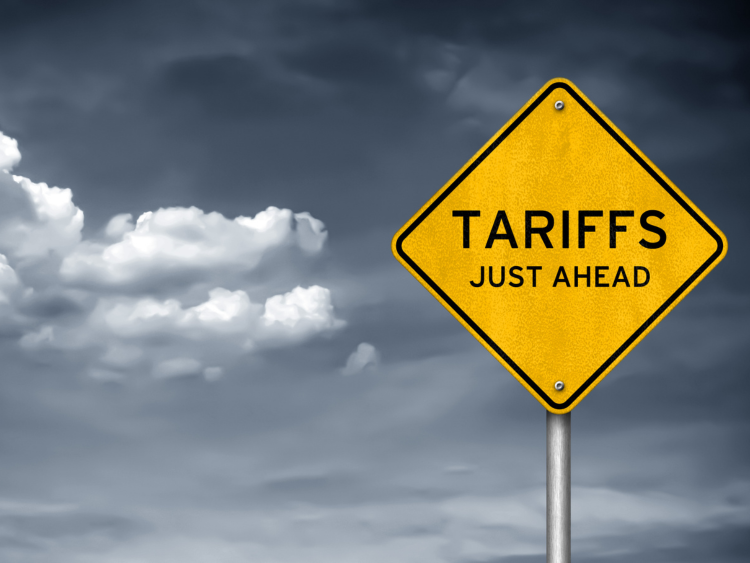Trade Cases
Leibowitz: The Supreme Court and the fight over 'Chevron deference'
Written by Lewis Leibowitz
January 21, 2024
America is increasing a society run by regulations. Businesses and individuals deal with a host of agencies that control transportation, the environment, labor regulation, securities, competition and, of course, international trade; the list goes on and on.
We are also a litigious society, dependent on neutral tribunals to resolve disputes. Who decides who is right and who is wrong? At the center of these basic questions is the Chevron doctrine.
Chevron refers to a 1984 Supreme Court decision, Chevron USA v. Natural Resources Defense Council (NDRC). The case was about the meaning of the Clean Air Act. In 1977, Congress gave the Environmental Protection Agency authority to regulate emissions from “stationary sources” of air pollution. In 1977, under the Carter administration, the EPA defined “stationary sources” to mean every device that produced air pollution. 1981, under the Reagan administration, the EPA concluded that a “stationary source” should refer to an industrial facility as a whole, rather than treating each of the constituent “devices” in an industrial complex as a separate “source.”
The latter would have intruded much more extensively into the workings of corporate America, threatening to make companies non-viable through over-regulation. The NRDC sought review of that new regulation. The Court of Appeals sided with NRDC and against the agency. The Supreme Court, in a unanimous 6-0 decision (three justices recused themselves), sided with the agency and created the rule of Chevron deference.
Chevron held that, where a statute leaves a space (ambiguity) regarding agency authority, reviewing courts must engage in a two-step process. First, the court should determine whether Congress actually left a space, meaning that Congress did not resolve the meaning of a statutory term. Second, the reviewing court must analyze the meaning decided by the agency. If that agency choice is “reasonable,” the courts must defer to that choice.
Chevron deference has been relied on to resolve thousands of cases. Last week, the viability of Chevron deference was challenged in two cases involving fishing regulations. The agency determined, even though the statute did not specifically authorize it, that fishing boats had to have agency officials on fishing vessels and that the boat owners had to pay the salaries of those officials. Two courts deferred to the agency decision requiring the payment of salaries, and the affected companies appealed to the Supreme Court.
The question is whether the Supreme Court will overrule Chevron and permit judges to decide these issues without giving deference to the agency concerned. The issue has generated a huge debate between liberals and conservatives, and between government and regulated businesses. Who should decide these questions of law and policy?
On the one hand, those wanting to do away with Chevron deference argue that courts are empowered to say “what the law is.” The seminal case of Marbury v. Madison (1803) states that “It is emphatically the province and duty of the Judicial Department to say what the law is.” When Congress passed the basic statute governing administrative agencies, the Administrative Procedure Act in 1946, it gave the courts the authority to determine all “questions of law.” In the arguments last week, justices Alito, Gorsuch, and Kavanagh leaned in this direction.
On the other hand, Chevron deference has its proponents too. They argue that judges can second-guess regulatory agencies. A disgruntled judge, for example, could wreck the regulatory scheme under which an agency operates. The “stationary source” question in Chevron itself is an example. The Carter administration in 1977 decided that “stationary source” should examine each polluting device in a facility separately. Four years later, the administrator (ironically the mother of current Justice Neil Gorsuch) reversed course. If Chevron deference disappears, the agency would lose the ability to change course if a judge took one side or the other. Justices Sotomayor, Kagan, and Jackson lean this way.
Chief Justice Roberts and Justice Thomas are skeptical of Chevron but did not reveal their final positions. Justice Barrett expressed well-founded concern that overruling Chevron would cast doubt on the correctness of thousands of decisions sustaining agency decisions over the last 40 years. She is still considered likely to at least rein in Chevron deference.
So, we are up in the air at this point. Clearly, at least four justices determined to review Chevron, which means they are troubled by the precedent. It will affect the regulatory state profoundly. Administrative agencies in the international trade space (Commerce, USTR, Treasury, ITC) will be seriously affected along with dozens of other agencies. Chevron helped create the powerful regulatory state, strengthening the power of the executive branch of government. Its demise would strengthen the hand of the judicial branch and weaken the executive branch.
Most reporting on the argument expect that the Supreme Court will at least modify Chevron if not overrule it outright. I heard what they heard, and I believe that to be the case.
But how will it be modified? My own view is that the Court will likely put more stringent conditions on deference to agency determinations about the meaning of statutes. “Step one” of Chevron requires that a court determine if Congress truly left a gap in the statute, and that they preferred the agency to fill that gap. If a statute is poorly drafted (and yes, that often happens) and leaves an ambiguity that is not central to the statutory framework, a court is no less qualified than an agency to resolve that ambiguity. If this distinction controls, then courts may defer much less often than they do now.
If, however, a statute deliberately leaves a statutory gap, because Congress needed the agency to figure out which way to go based on knowledge and experience that Congress lacks, and Congress expressed the desire for the agency to fill the gap, then deference by a court could be the right answer, even after the Supreme Court speaks this summer. But drawing the line between an “accidental” ambiguity and a deliberate one could be difficult.
If Chevron is overruled or modified, Congress will need to be more careful as it makes laws. There is no doubt that our national legislature does not have a strong track record of identifying issues and solving them. They would need to get back in playing shape. Congress could pass a statute reversing a court decision that went against an agency interpretation. But Congress has not been good at doing that. If Congress fails to act, Chevron stacks the deck in favor of agencies and against the private litigants that challenge agency action. Overruling Chevron would give more consideration to private litigants.
The Supreme Court will speak by the end of June. It seems, based on last Wednesday’s oral arguments, that it will change Chevron substantially but leave a portion of it intact. Courts would have more to say about what the law is, but there may still be some deference. This issue is huge, and change is in the air.

Lewis Leibowitz
Read more from Lewis LeibowitzLatest in Trade Cases

Price on Trade: The foolishness of free trade with controlled economies
It was only a matter of time before a shutdown happened. And, no, we aren’t talking about the federal government’s lapse in appropriations. On Oct. 9, Beijing announced a series of restrictions that will effectively shut down exports of rare earth elements, magnets, and certain downstream products vital to advanced manufacturing.

Trump pulls plug on trade talks with Canada after anti-tariff Reagan ad
US President Donald Trump took to social media late Thursday night to announce he was canceling trade talks with Canada.

Leibowitz: Renewed trade war with China over rare earths
On Oct.10, President Trump announced major increases in tariffs on Chinese goods. The trigger was a new regime of export controls on rare earth metals and products using those elements, including magnets, capital equipment, and catalysts for catalytic converters in cars and trucks.

Industry piles on new Section 232 steel derivative inclusion requests
The Department of Commerce received 97 submissions from producers, manufacturers, and groups seeking Section 232 tariff coverage for steel and aluminum derivative products.

Price on Trade: New EU steel tariffs don’t mean the US should weaken its stance
Any steel imports into the EU that exceed the new, lower quota level would be subject to a 50% tariff, which represents a major increase from the EU’s current 25% out-of-quota tariff. This move would largely align the EU’s steel tariff rate with Canada and the United States.
